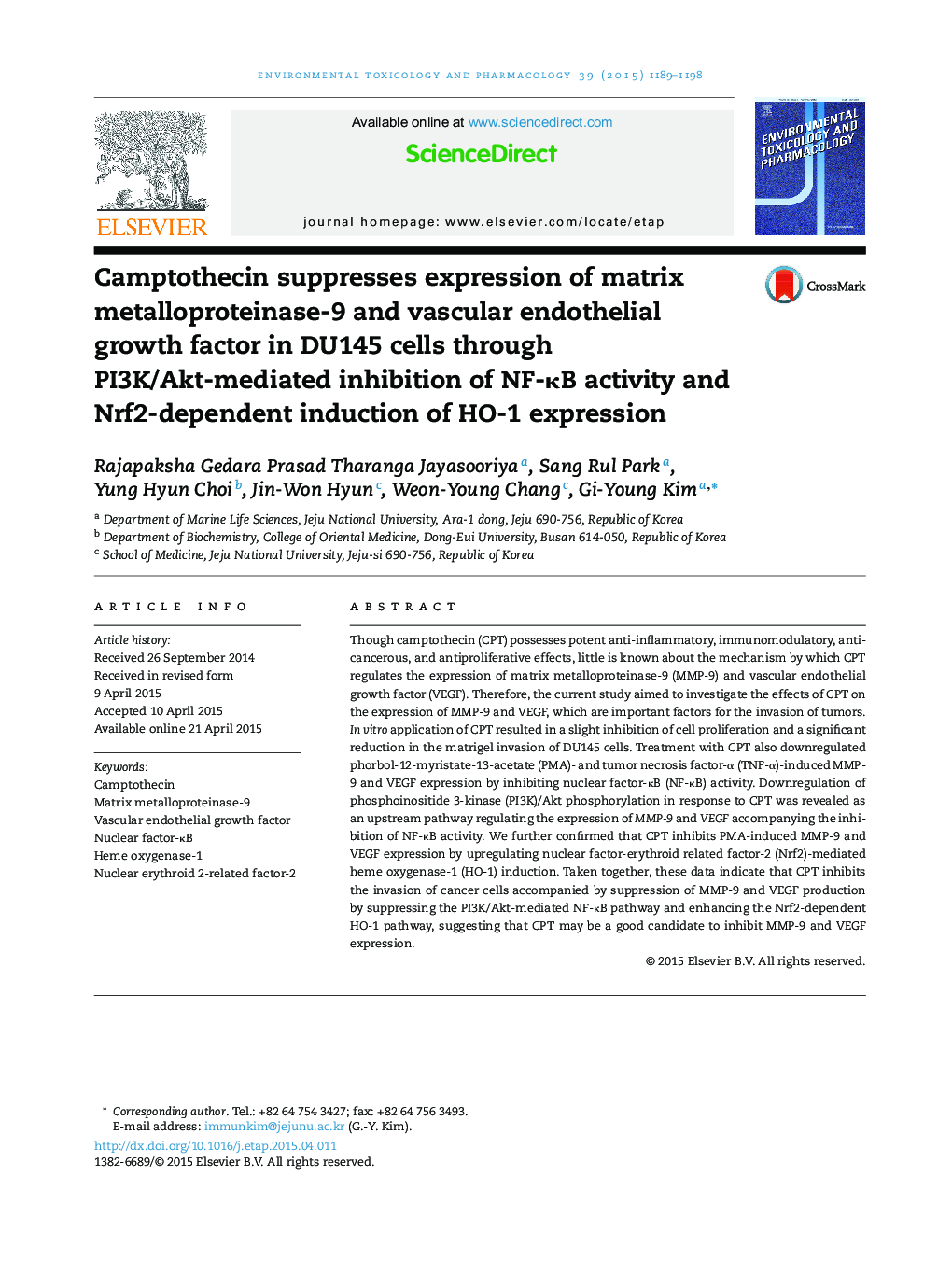| Article ID | Journal | Published Year | Pages | File Type |
|---|---|---|---|---|
| 2583156 | Environmental Toxicology and Pharmacology | 2015 | 10 Pages |
•CPT suppresses MMP-9 and VEGF production.•CPT regulates the PI3K/Akt pathway via an upstream molecule of NF-κB.•HO-1 induces CPT-induced MMP-9 and VEGF inhibition.•Nrf2 regulates CPT-induced MMP-9 and VEGF expression by inducing HO-1 expression.
Though camptothecin (CPT) possesses potent anti-inflammatory, immunomodulatory, anticancerous, and antiproliferative effects, little is known about the mechanism by which CPT regulates the expression of matrix metalloproteinase-9 (MMP-9) and vascular endothelial growth factor (VEGF). Therefore, the current study aimed to investigate the effects of CPT on the expression of MMP-9 and VEGF, which are important factors for the invasion of tumors. In vitro application of CPT resulted in a slight inhibition of cell proliferation and a significant reduction in the matrigel invasion of DU145 cells. Treatment with CPT also downregulated phorbol-12-myristate-13-acetate (PMA)- and tumor necrosis factor-α (TNF-α)-induced MMP-9 and VEGF expression by inhibiting nuclear factor-κB (NF-κB) activity. Downregulation of phosphoinositide 3-kinase (PI3K)/Akt phosphorylation in response to CPT was revealed as an upstream pathway regulating the expression of MMP-9 and VEGF accompanying the inhibition of NF-κB activity. We further confirmed that CPT inhibits PMA-induced MMP-9 and VEGF expression by upregulating nuclear factor-erythroid related factor-2 (Nrf2)-mediated heme oxygenase-1 (HO-1) induction. Taken together, these data indicate that CPT inhibits the invasion of cancer cells accompanied by suppression of MMP-9 and VEGF production by suppressing the PI3K/Akt-mediated NF-κB pathway and enhancing the Nrf2-dependent HO-1 pathway, suggesting that CPT may be a good candidate to inhibit MMP-9 and VEGF expression.
